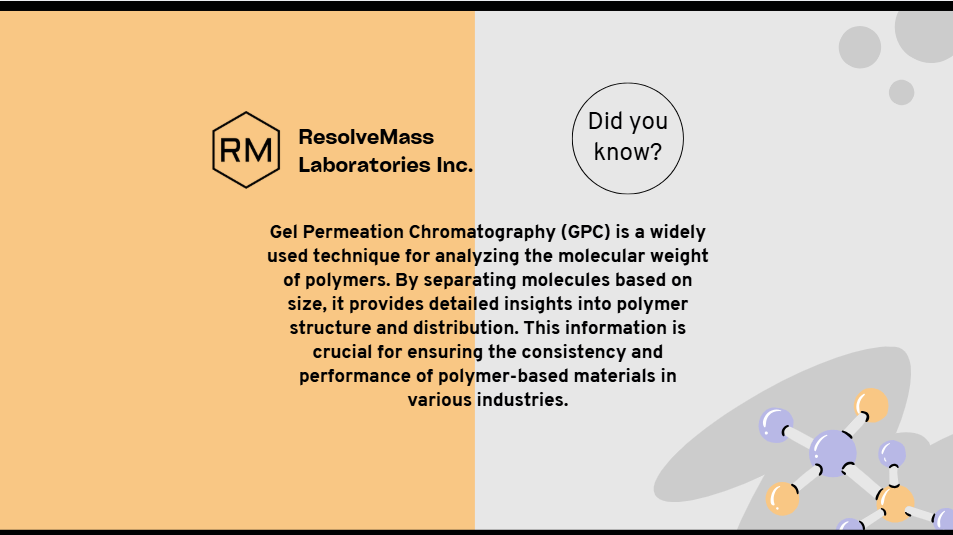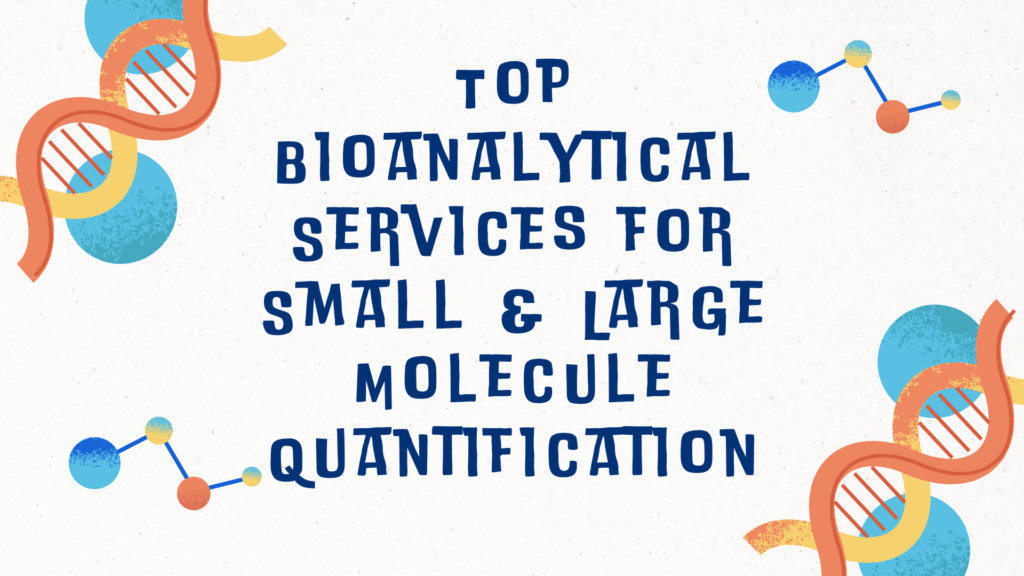
Gel Permeation Chromatography (GPC), also known as Size Exclusion Chromatography (SEC), is a powerful analytical technique for determining the molecular weight distribution of polymers. This method plays a crucial role in polymer characterization, allowing researchers and industries to assess key properties such as molecular weight, polydispersity, and structural integrity. In this guide, we will explore the fundamentals of GPC molecular weight analysis, its significance in polymer science, methodologies, applications, and best practices.
Understanding Molecular Weight in Polymers
Molecular weight is a fundamental property of polymers that directly influences their physical, chemical, and mechanical properties. The molecular weight distribution (MWD) provides insights into the polymer’s performance characteristics, such as viscosity, strength, solubility, and thermal stability.
Types of Molecular Weights
- Number Average Molecular Weight (Mn) – Calculated using the total number of molecules in a sample.
- Weight Average Molecular Weight (Mw) – Determined based on the weight fraction of different polymer molecules.
- Z-Average Molecular Weight (Mz) – Represents the higher molecular weight species in a polymer sample.
- Polydispersity Index (PDI) – A measure of the molecular weight distribution, calculated as Mw/Mn.
Understanding these molecular weight parameters helps in tailoring polymer materials for specific applications, including drug delivery, coatings, and biomaterials.
Principle of GPC Molecular Weight Analysis
GPC operates on the principle of size exclusion, where polymer molecules are separated based on their hydrodynamic volume rather than their molecular weight. The technique uses a porous stationary phase to selectively allow smaller molecules to enter the pores, while larger molecules elute faster.
Key Components of a GPC System
- Mobile Phase: A solvent that carries the polymer sample through the column.
- GPC Columns: Packed with porous beads that facilitate size-based separation.
- Detector Systems: Common detectors include Refractive Index (RI), UV-Vis, and Light Scattering detectors.
- Data Analysis Software: Used to generate molecular weight distributions and analyze peak profiles.
GPC Calibration Methods
Calibration is essential for obtaining accurate molecular weight values in GPC analysis. The most common calibration approaches include:
- Conventional Calibration: Uses a set of polymer standards with known molecular weights to create a calibration curve.
- Universal Calibration: Incorporates Mark-Houwink parameters to account for differences in polymer structures and solvent interactions.
- Light Scattering Calibration: Utilizes multi-angle light scattering (MALS) to directly measure absolute molecular weights.
- Intrinsic Viscosity Calibration: Involves the use of viscometry to refine molecular weight determinations.
Sample Preparation for GPC Analysis
Proper sample preparation ensures accurate and reproducible results. Key steps include:
- Selection of Solvent: Common solvents include tetrahydrofuran (THF), chloroform, and dimethylformamide (DMF).
- Dissolution: Ensuring complete dissolution of the polymer in the chosen solvent.
- Filtration: Removing particulates that could interfere with column performance.
- Injection: Delivering a precise volume of the sample into the GPC system.
Applications of GPC Molecular Weight Analysis
GPC is widely used across various industries, including:
1. Pharmaceuticals and Biopolymers
- Characterizing drug delivery systems such as PLGA nanoparticles.
- Analyzing protein-based therapeutics.
2. Plastics and Polymers
- Quality control in polymer manufacturing.
- Assessing polymer degradation and stability.
3. Coatings and Adhesives
- Optimizing molecular weight for improved adhesion properties.
- Studying crosslinking behavior in coatings.
4. Medical Devices and Biomaterials
- Ensuring biocompatibility of polymeric implants.
- Evaluating hydrogel formulations for tissue engineering.
Best Practices for Accurate GPC Analysis
- Column Selection: Choose columns with an appropriate pore size for the polymer being analyzed.
- Solvent Compatibility: Ensure that the solvent does not interact with the polymer or column material.
- Flow Rate Optimization: Maintain a consistent flow rate to improve reproducibility.
- Use of Multiple Detectors: Combining RI, MALS, and viscometry provides a more comprehensive analysis.
- Regular Maintenance: Periodic calibration and cleaning of the GPC system prevent contamination and ensure accuracy.
Challenges and Limitations in GPC Analysis
- Baseline Drift and Detector Noise: Can affect peak resolution and quantification.
- Solvent Evaporation: Alters concentration and molecular weight readings.
- Sample Aggregation: Leads to incorrect molecular weight estimation.
- Column Degradation: Causes shifts in retention time and poor separation.
Future Trends in GPC Analysis
Advancements in GPC technology are enhancing its analytical capabilities. Some emerging trends include:
- High-Resolution GPC: Provides better separation for complex polymer mixtures.
- Online GPC Systems: Enables real-time monitoring in industrial applications.
- GPC-Mass Spectrometry Coupling: Allows for in-depth structural characterization of polymers.
- AI-Powered Data Analysis: Automates peak identification and molecular weight calculations.
REFERENCES
- Izunobi JU, Higginbotham CL. Polymer molecular weight analysis by 1H NMR spectroscopy. Journal of Chemical Education. 2011 Aug 1;88(8):1098-104.
- Neira‐Velázquez MG, Rodríguez‐Hernández MT, Hernández‐Hernández E, Ruiz‐Martínez AR. Polymer molecular weight measurement. Handbook of polymer synthesis, characterization, and processing. 2013 Feb 25:355-66.
- Dragostin O, Profire L. Molecular weight of polymers used in biomedical applications. InCharacterization of polymeric biomaterials 2017 Jan 1 (pp. 101-121). Woodhead Publishing.
- Wiley. Characterization and analysis of polymers. John Wiley & Sons; 2008 Feb 8.
LET’S CONNECT
For expert GPC molecular weight analysis services, contact ResolveMass Laboratories Inc. We provide high-precision polymer characterization tailored to your research and industry needs.
ICH Q3E Guideline for Extractables and Leachables: Complete Technical Breakdown for 2025
INTRODUCTION The ICH Q3E guideline for Extractables and Leachables provides the international standard for evaluating…
Extractables and Leachables (E&L) Testing in the USA vs. Europe: Regulatory Differences
INTRODUCTION Extractables and Leachables (E&L) Testing in the USA vs. Europe: Regulatory Differences is one…
The Role of Extractables and Leachables (E&L) in Carcinogenicity Risk
Introduction Extractables and Leachables Carcinogenicity Testing plays a vital role in protecting patients who rely…
Case Study: Forced Degradation Study of Gimeracil — Discovery and Structure Elucidation of Novel Impurities
Introduction Forced degradation studies are a cornerstone of modern pharmaceutical development, enabling scientists to intentionally…
Affordable Bioanalytical Services for Start-Up Biotech: What to Expect
INTRODUCTION Affordable bioanalytical services for start-up biotech companies provide the essential analytical support needed to…
Top Bioanalytical Services for Small & Large Molecule Quantification
Introduction Bioanalytical services for small & large molecule quantification are essential for ensuring precision, sensitivity,…







